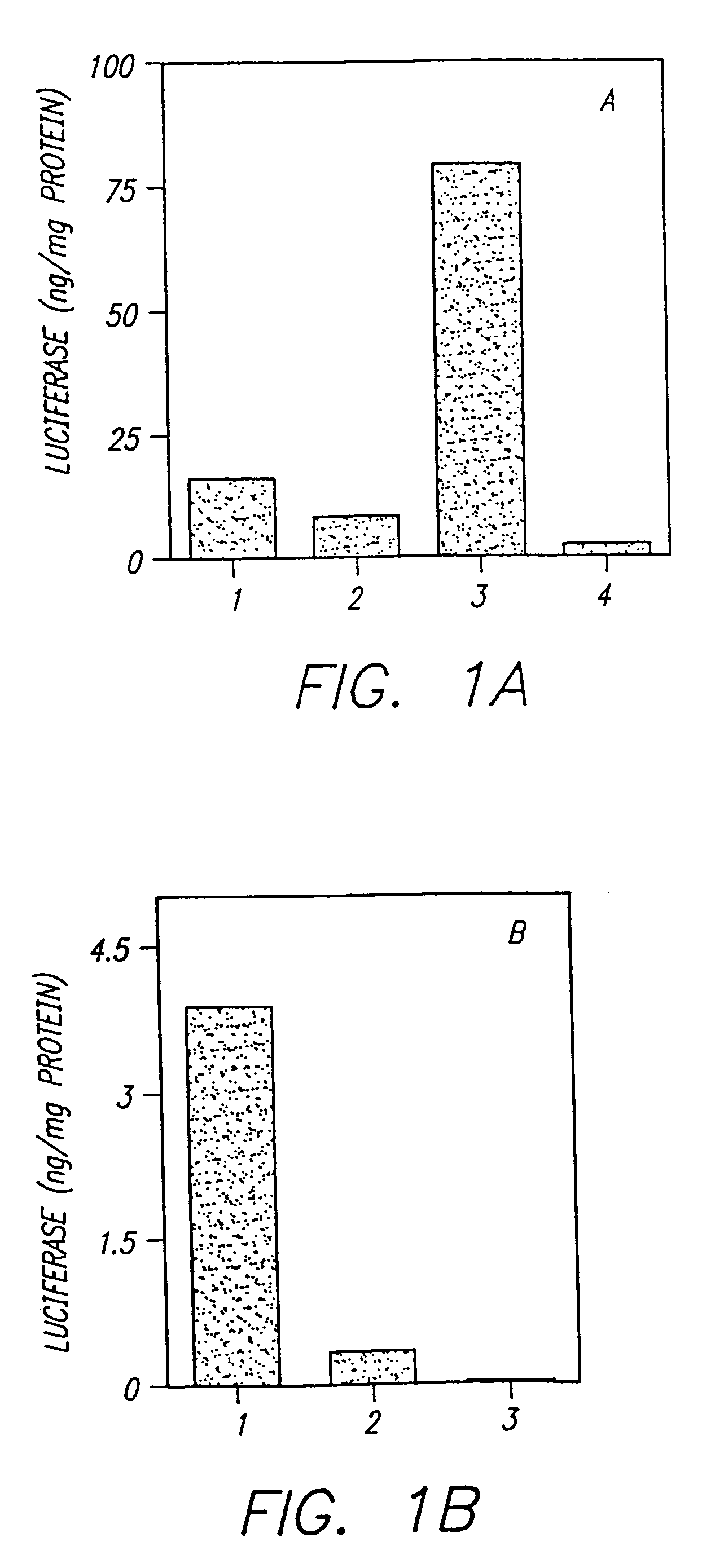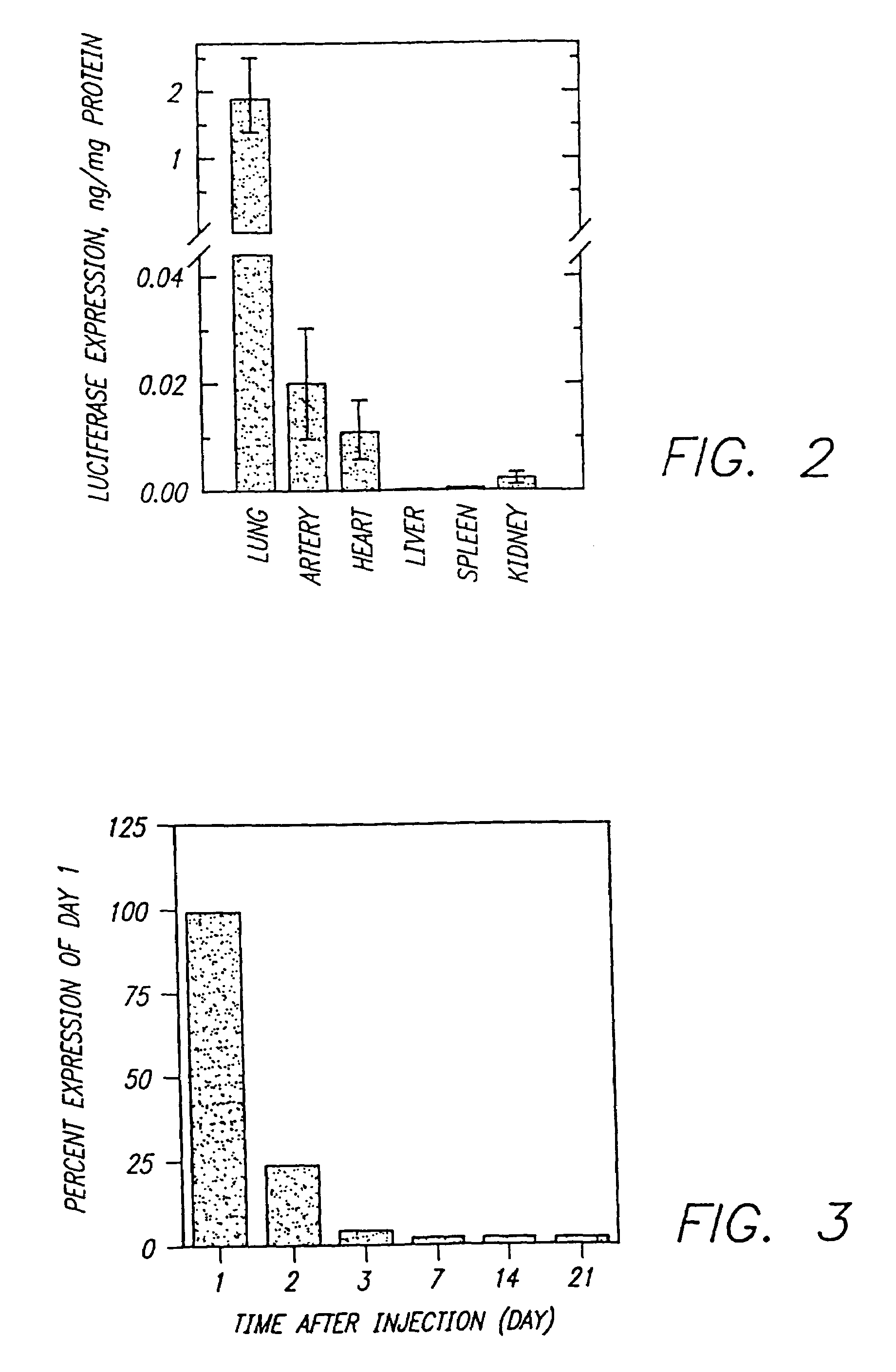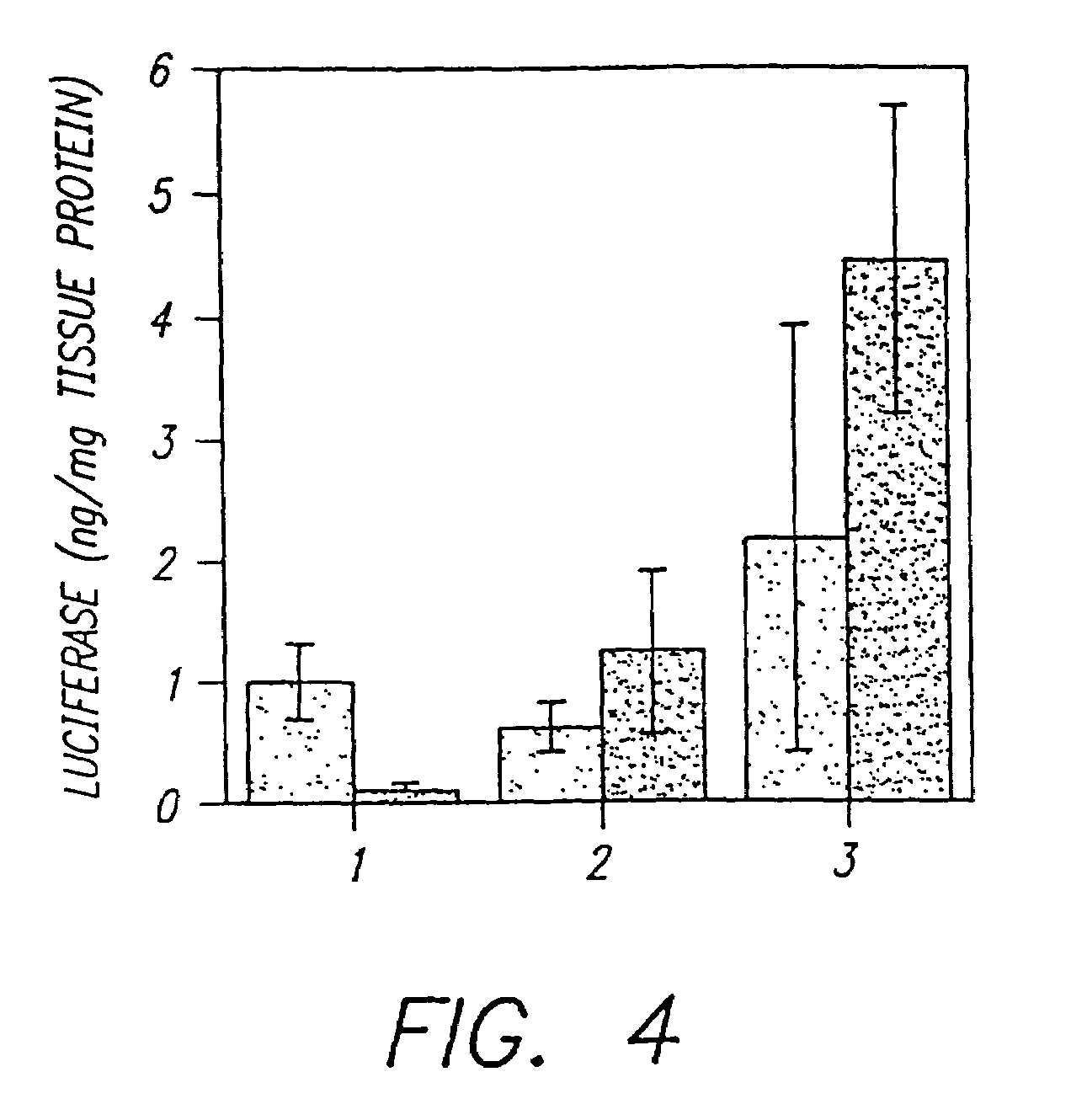Methods for attaching proteins to lipidic microparticles with high efficiency
a lipid microparticle, high-efficiency technology, applied in the direction of application, genetic material ingredients, organic chemistry, etc., can solve the problems of inability to replicate or recombine to form infectious agents, low integration frequency, and inability to address the problem of stable shelf-life preparation of complexes, etc., to achieve the effect of increasing shelf life and increasing shelf li
- Summary
- Abstract
- Description
- Claims
- Application Information
AI Technical Summary
Benefits of technology
Problems solved by technology
Method used
Image
Examples
example 1
Preparation of Stable Lipid:Plasmid DNA Complexes for in vivo Gene Delivery
[0145]A. Materials and Methods
[0146]1. Lipids & Other Reagents
[0147]DOPE was purchased from Avanti (Alabaster, Ala.). Highly purified Cholesterol was obtained from Calbiochem (San Diego, Calif.). DDAB and dextran (M.W. 40,000) were purchased from Sigma (St. Louis, Mo.). DDAB was recrystalized once from acetone-methanol solution. D-luciferin was obtained from Boehringer Mannheim. PEG-PE was a gift from Sequus Pharmaceuticals (Menlo Park, Calif.). DC-Chol, MMCE and DOGS were obtained from UCSF Gene Transfer Vehicle Core of Gene Therapy Center. ESPM, DOTAP, POEPC, DOEPC, DMEPC and DODAP were gifts from Avanti (Alabaster, Ala.). Chloroform solution of each lipid was stored under argon in sealed ampules at −40° C. Other reagents of possible highest grade were purchased and used without further purification.
[0148]2. Preparation of Liposomes
[0149]Small cationic liposomes were prepared in 5% (w / v) dextrose solution i...
example 2
In vitro Transfection of Lipid:Plasmid DNA Complexes with Targeting Ligands
A. Preparation of Fab′ Fragments
[0176]Cloned rhuMAbHER2 sequences for heavy and light chain were co-expressed in E. coli as previously described (Carter et al., Biotechnology 10: 163–167 (1992)). The antibody fragment, rhuMAbHER2-Fab′, was recovered from E. coli fermentation pastes by affinity chromatography with Streptococcal protein G (Carter et al., Biotechnology 10:163–167 (1992)), typically yielding Fab′ with 60–90% containing reduced free thiol (Fab′-SH).
B. Preparation of Liposomes
[0177]Condensed DNA was complexed with three different lipid compositions, using the methods described above in Example 1, with the following modifications. The first complex was made with DDAB / DOPE (1 / 1), which produced cationic liposomes complexed with DNA only, as described above. The second complex was made with DDAB / DOPE (1 / 1) with 1% PEG-PE derivatized with maleimide at the ultimate position of PEG, producing CLDC with t...
example 3
Preparation of the Linker Maleimido-propionylantido-PEG2000-distearoylphosphatidylethanolamine (Mal-PEG-DSPE)
[0181]100 mg (44 mol) of ω-maleimidopropionylamido-poly(ethylene glycol)-α-succinimidylcarbonate (Mal-PEG-NHS; Shearwater Polymers, Inc.) prepared from poly(ethylene glycol) (molecular weight 2,000), 33 mg (44 μmol) of distearoyl-phophatidylethanolamine (DSPE; Avanti Polar Lipids), and 12 ml (86 μmol) of triethylamine in 1 ml of chloroform, were incubated for 6 hours at 45° C. At this time, thin layer chromatography on silica (solvent, chloroform / methanol 7:3) indicated complete conversion of DSPE into faster moving, ninhydrin-negative product identified as Mal-PEG-DSPE. This product was purified by column chromatography on silica, using stepwise gradient of methanol in chloroform (5%, 10%, 15% of methanol by volume. Pure Mal-PEG-DSPE was eluted at 15% methanol. Yield, 85 mg (67% of theory). Rf 0.27–0.29 (Silica 60, CHCl3-MeOH—H2O 65:25:4). Ratio of maleimido groups to phosph...
PUM
| Property | Measurement | Unit |
|---|---|---|
| molecular weight | aaaaa | aaaaa |
| molecular weight | aaaaa | aaaaa |
| molecular weight | aaaaa | aaaaa |
Abstract
Description
Claims
Application Information
 Login to View More
Login to View More - R&D
- Intellectual Property
- Life Sciences
- Materials
- Tech Scout
- Unparalleled Data Quality
- Higher Quality Content
- 60% Fewer Hallucinations
Browse by: Latest US Patents, China's latest patents, Technical Efficacy Thesaurus, Application Domain, Technology Topic, Popular Technical Reports.
© 2025 PatSnap. All rights reserved.Legal|Privacy policy|Modern Slavery Act Transparency Statement|Sitemap|About US| Contact US: help@patsnap.com



